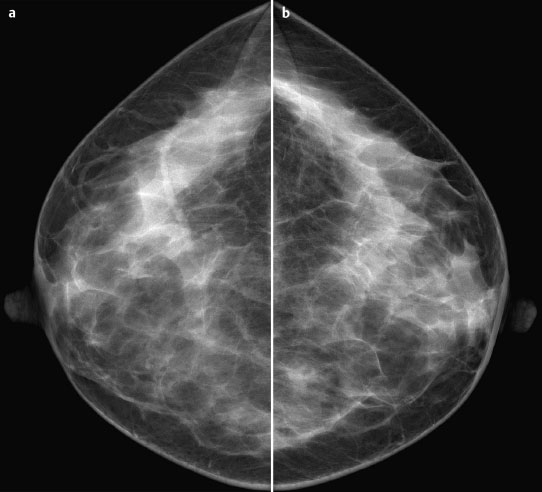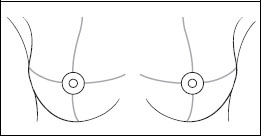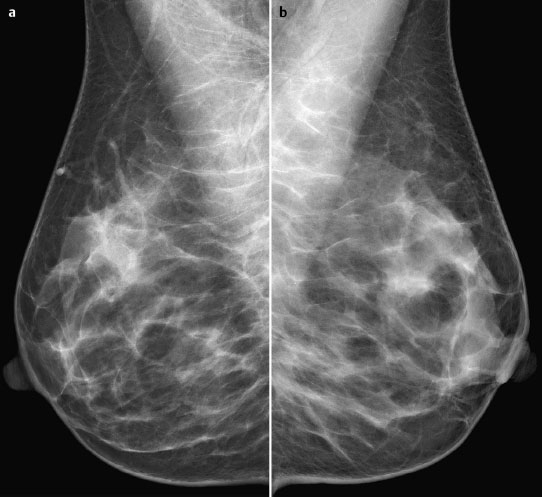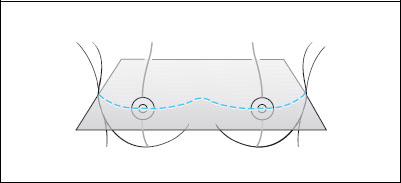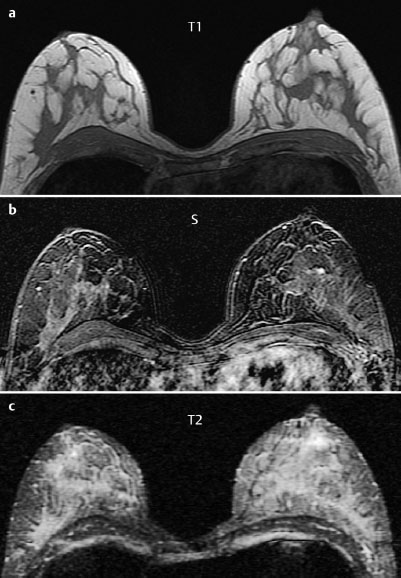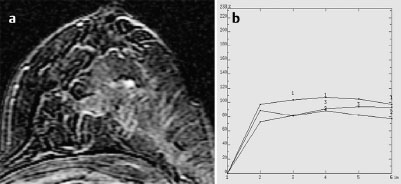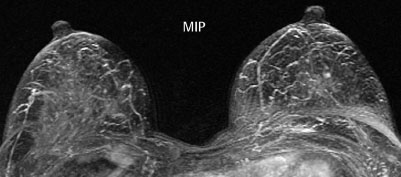MRM score | Finding | Points |
Shape | round | 0 |
Border | well-defined | 0 |
CM Distribution | inhomogeneous | 1 |
Initial Signal Intensity Increase | moderate | 1 |
Post-initial Signal Intensity Character | plateau | 1 |
MRI score (points) |
| 3 |
MRI BI-RADS |
| 3 |
 Differential Diagnosis
Differential Diagnosis
Fibroadenoma, adenoma, papilloma, small carcinoma.
BI-RADS Categorization | ||
Clinical Findings | right 1 | left 1 |
Ultrasound | right 1 | left 1 |
Mammography | right 1 | left 1 |
MR Mammography | right 1 | left 3 |
BI-RADS Total | right 1 | left 3 |
Procedure
Follow-up examination (MRI) in 6 months.
Fig. 7.6a–c Monitoring of findings.
a First examination.
b Second examination 6 months after first MRI.
c Second examination 12 months after first MRI.
Diagnosis (without histopathological verification, but MRI findings consistent over 12 months)
Benign mass in the left breast (fibroadenoma, adenoma, papilloma?)
Stay updated, free articles. Join our Telegram channel

Full access? Get Clinical Tree


